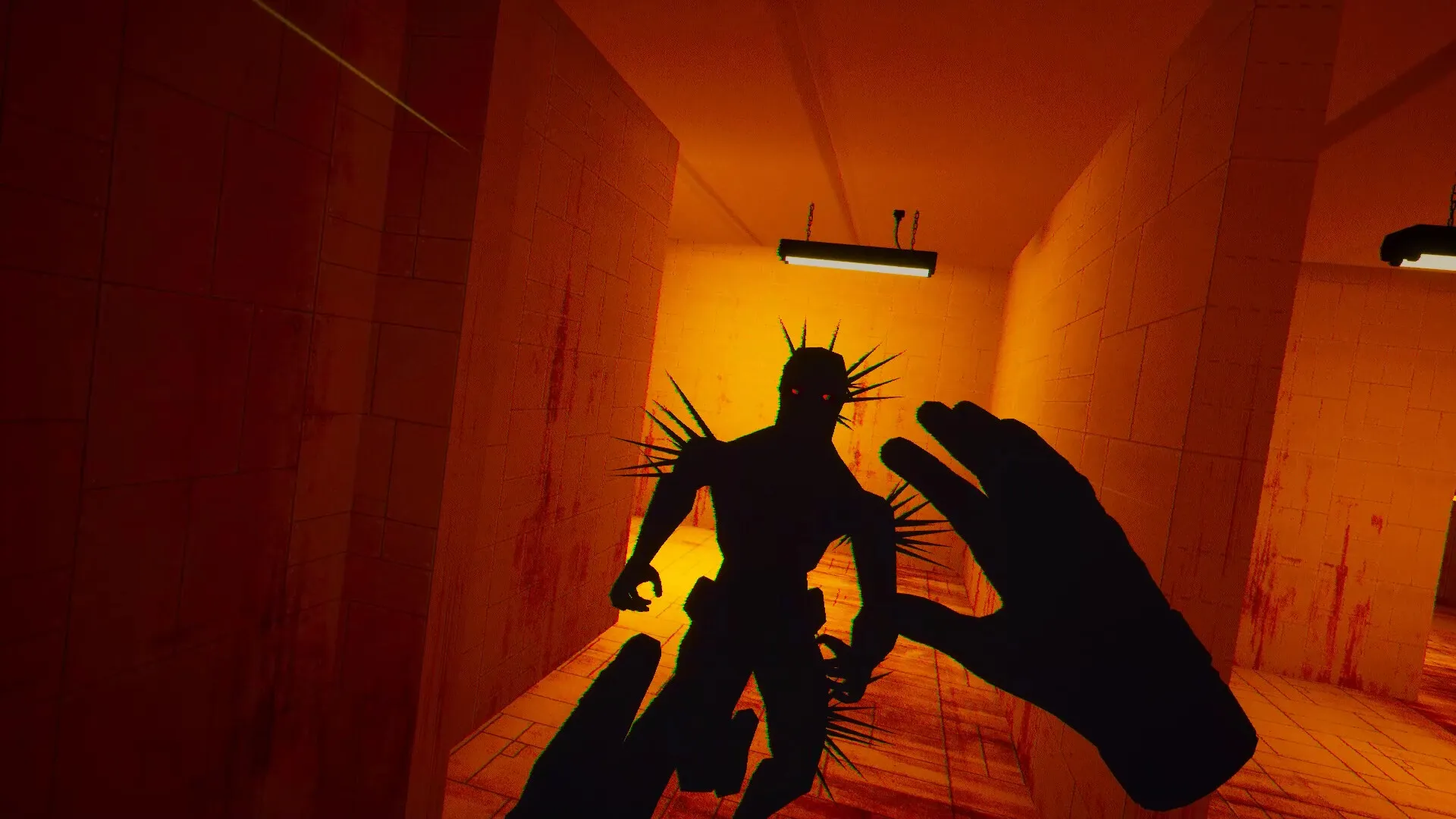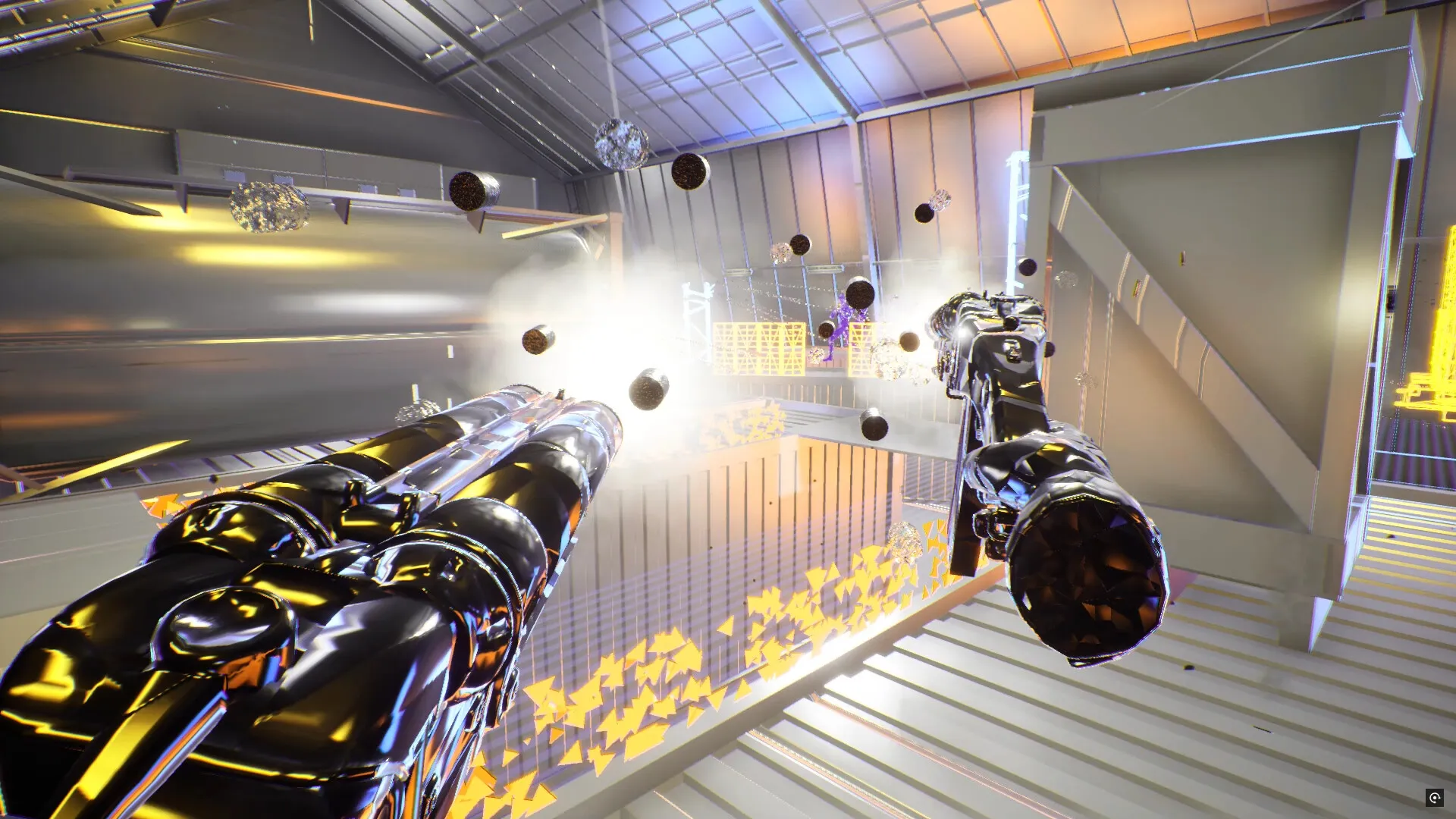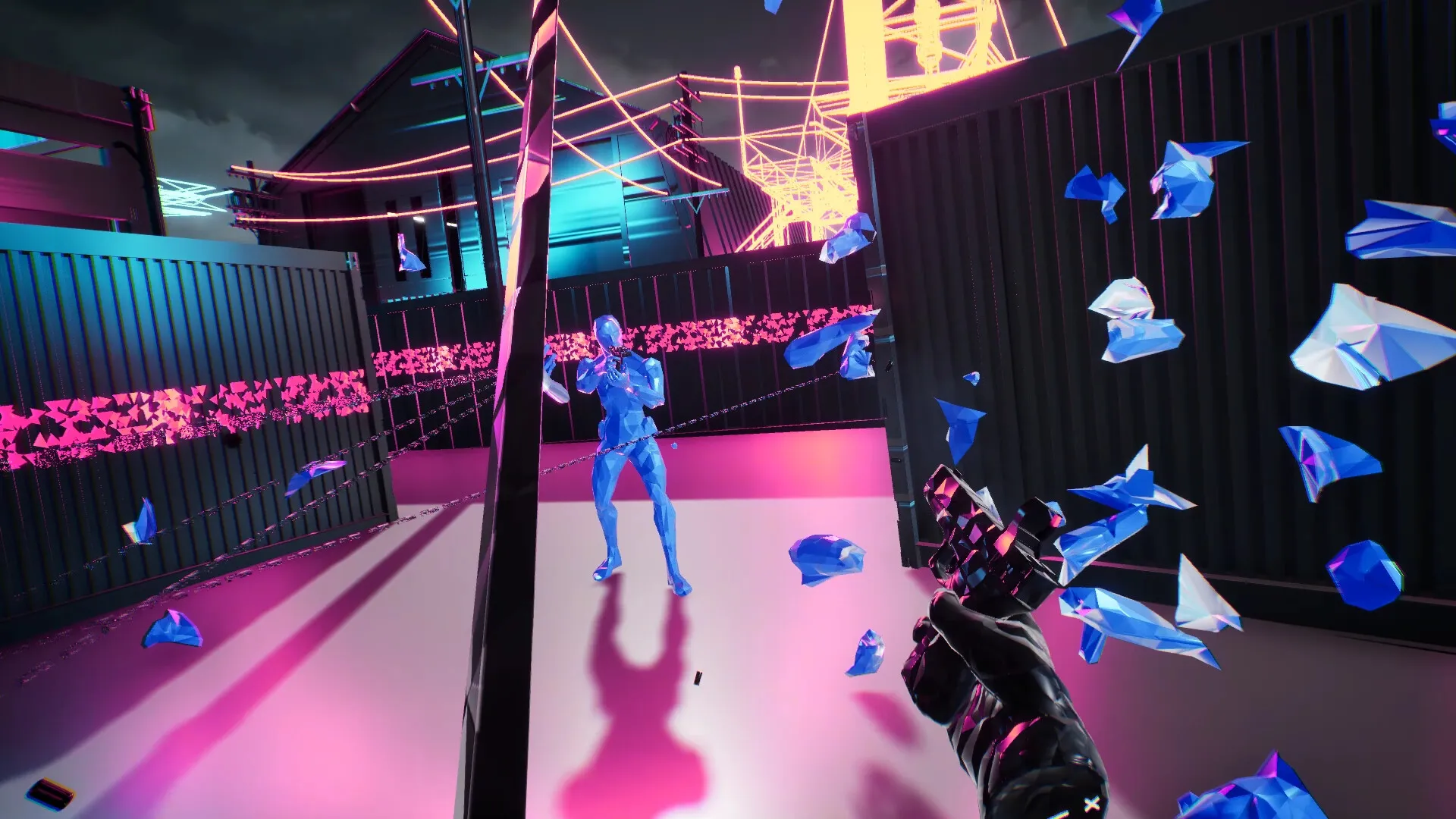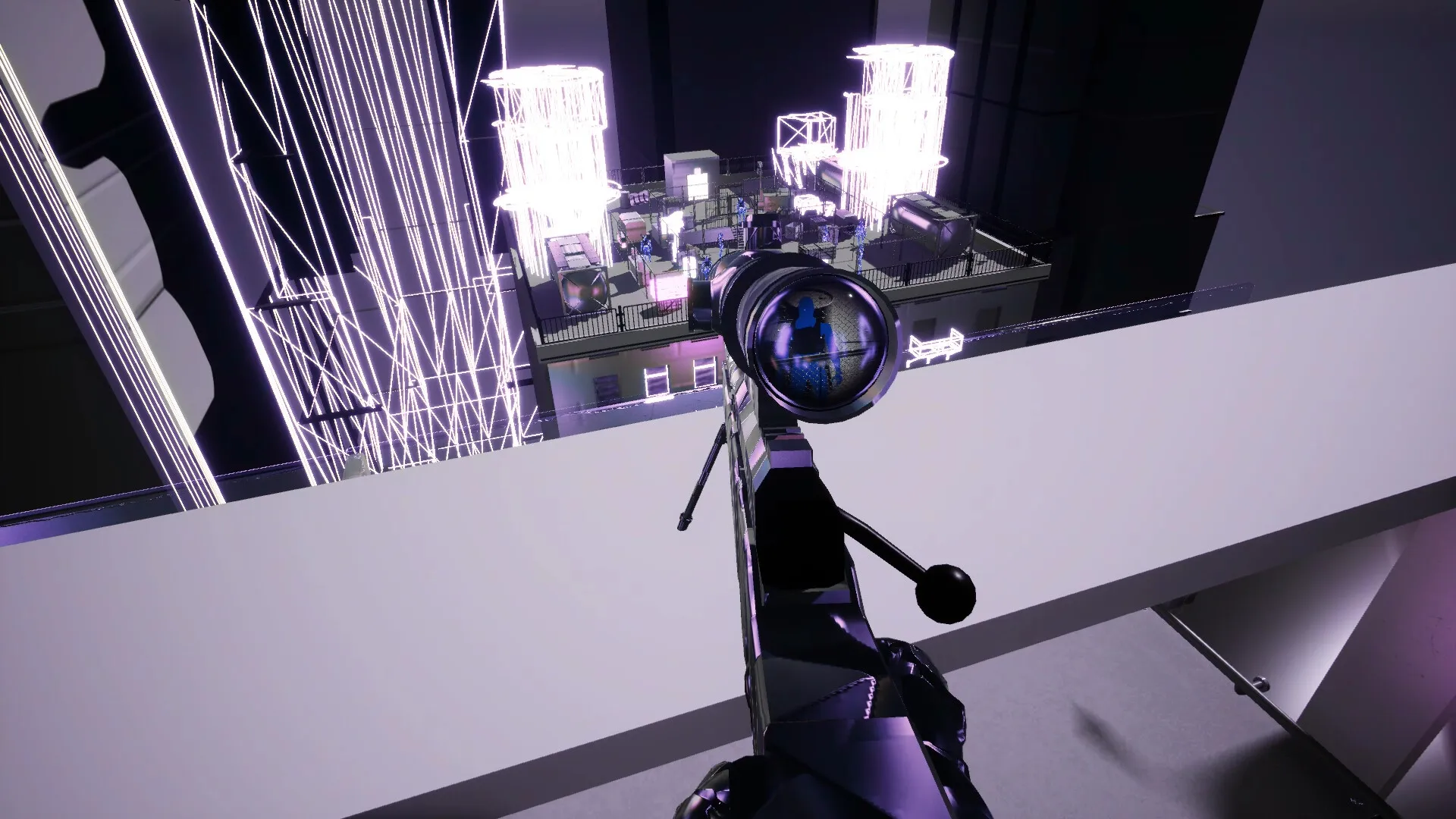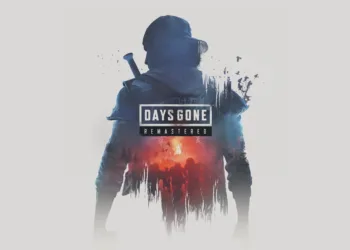The game introduces a time mechanic where movement directly influences how time progresses. Instead of freezing moments when the player stands still, moving causes time to slow.
This reversal of conventional time control offers a distinct approach compared to other virtual reality shooters. The shift in tempo forces players to maintain constant motion, affecting combat dynamics and decision-making during encounters.
Set against a futuristic, cyberpunk backdrop, the narrative places the player in the role of a specialized software agent tasked with fighting a rogue artificial intelligence.
The storyline unfolds through live-action video segments, featuring an ALLWARE employee who guides the player throughout the missions. These sequences add a human element to the experience and help connect the high-tech environments with the overarching conflict against the digital threat.
The game is designed to appeal to those who appreciate experimental gameplay in virtual reality. It offers an alternative method of managing time and pace during action sequences, challenging players to adapt quickly and continuously adjust their tactics.
Comparisons to similar titles in the genre arise naturally, as this title provides a distinct twist on familiar mechanics, presenting both innovative moments and challenges that set it apart in the competitive VR shooter market.
Gameplay Mechanics and Core Systems
The game introduces a time mechanic where the rate of time is directly affected by the player’s movement. Unlike many VR shooters where standing still freezes time, here moving causes time to slow down.
This mechanic alters the pace significantly; as players move, enemy actions appear to decelerate, forcing rapid decision-making. The design creates moments where careful positioning yields a tactical advantage, yet there are times when the slowed pace leaves little margin for error, especially during close encounters.
The range of weapons available includes options for melee, ranged, and even dual-wielding. In melee combat, the system struggles with issues in hit detection.
Players must close the distance to register attacks, which exposes them to immediate counterattacks. This often results in encounters where a slight misstep quickly turns an offensive into a hazardous situation.
Ranged combat, on the other hand, is influenced by the time-slowing effect; as players fire, enemy movements also adjust, adding a layer of complexity to aiming and timing.
The inability to pick up enemy weapons further restricts flexibility in combat scenarios, making players rely on their starting loadout without much room for improvisation.
Movement is a central element in leveraging the time-slowing mechanic. Continuous motion is essential not only to trigger the effect but also to dodge incoming enemy fire.
The game’s levels are designed to challenge spatial awareness, presenting both confined spaces that limit movement and expansive areas that expose players to multiple threats.
While there is an option to throw objects, the feature is limited by its inconsistent performance. As a result, players must focus on precise movement and tactical positioning to overcome the dynamic challenges presented throughout each encounter.
Level Design and World-Building
The game offers several distinct settings, ranging from futuristic cyberpunk areas to seafaring pirate ships, modern train compartments, and even optional horror segments that feel out of place.
The sudden shifts between these backdrops sometimes disrupt the feeling of a unified world. This mix of environments is reminiscent of other VR shooters with a steadier thematic focus, yet the rapid changes require players to adjust quickly as they progress.
Examining the level design, it is clear that the dimensions of the arenas play a significant role in the game’s mechanics. Certain sections feature narrow corridors where movement is restricted, which limits the effective use of the time-slowing effect.
While some areas are designed with openness that exposes players to multiple threats, these choices result in sudden spikes in difficulty.
Players must repeatedly experiment with different strategies to move forward. Optional segments, particularly the horror-inspired levels, appear poorly integrated with the primary gameplay. Their inclusion, meant to offer variety, can disrupt the steady rhythm of encounters.
Visual cues and architectural details throughout the game hint at a larger narrative involving a rogue artificial intelligence. The environments incorporate elements that reflect the digital conflict, such as malfunctioning systems and remnants of a dystopian society.
Interactive objects like trampolines and control panels add a degree of dynamism to the settings. These elements provide players with clues about the larger situation, even if the connections are not immediately clear.
The level design attempts to convey story aspects through its varied settings, although the shifts in style sometimes leave the narrative feeling fragmented.
The inclusion of interactive features, such as platforms that bounce players and switches that trigger in-level events, introduces a layer of interactivity that encourages exploration.
While these elements occasionally enhance the gameplay, they also underscore the uneven integration between the narrative and design. This disjointed approach may leave some players questioning the overall intent of the level design.
Narrative and Storytelling
The story centers on a digital threat in the form of a rogue artificial intelligence. The player is cast as a specialized software agent with the task of countering this AI.
A futuristic setting supported by cyberpunk visuals underpins the narrative, framing each mission as a tactical operation against a pervasive digital enemy. This structure organizes challenges and places clear stakes on every encounter.
Between missions, live-action video segments feature an ALLWARE guide who brings a human element into the experience.
The guide’s performance adds character and provides context that connects the distinct missions. The plot itself remains straightforward, serving as a backdrop that defines the player’s objectives without overwhelming the action.
A clear link exists between the narrative and the gameplay. The design of the levels and the behavior of adversaries reflect the struggle against an omnipresent AI, aligning the environment with the central conflict.
Certain sections suggest that additional narrative detail might have strengthened the cohesion between the story and the combat scenarios. Some transitions in the narrative do not fully support the gameplay, leaving gaps where extra context could have enhanced the sense of immersion.
Visual Presentation and Art Direction
The game uses a minimal art style, featuring cool blues and greys that emphasize its cold theme. The design is clean and sparse, creating a digital atmosphere that matches its futuristic setting. Cyberpunk influences are evident, setting it apart from titles that favor more intricate visuals.
Technical performance varies across VR systems. On some Quest models, lighting may seem flat and textures on character models often lack fine detail. Special effects like slow-motion enemy explosions offer occasional visual highlights, although these moments are inconsistent because of hardware limitations.
Environment design contributes to the sense of a digital conflict. Each level has its own distinct look, yet the rapid shifts between confined interiors and larger spaces can disrupt player engagement. Compromises in visual clarity, likely tied to technical constraints, sometimes detract from the intended atmosphere.
The visual effects occasionally create memorable moments that help soften the impact of technical limitations. For instance, when enemy units break apart in slow motion, the effect provides a brief, satisfying pause in the heat of combat.
This moment of clarity is rare but demonstrates the potential of the game’s artistic design if hardware performance were more consistent. A few refinements in texture detail and lighting could allow these effects to appear more regularly, enriching the player’s experience further.
Audio and Sound Design
The game’s techno soundtrack drives the combat experience, infusing each battle with urgency that aligns with the time-slowing mechanic. As the player moves, the pulsating beat adjusts dynamically, heightening tension during enemy encounters.
Crisp weapon sounds and sharp impact effects further define the rhythm, ensuring that each shot and collision is distinctly felt. Ambient audio cues anchor the experience in a digital environment, reinforcing the pace of each encounter.
In the live-action segments, the guide’s voice provides a steady narrative presence that clarifies mission objectives. The performance in these sequences injects character into the otherwise mechanical framework, offering insight into the challenges ahead.
Each vocal nuance adds clarity to the unfolding story. This audio design is reminiscent of well-regarded titles in the VR shooter genre, where sound plays a key role in player immersion, effectively blending gameplay with narrative elements.
VR Experience and Technical Performance
The control scheme is a focal point in this VR title. Players encounter a system that handles weapon selection and movement in a manner common to other VR shooters, yet the lack of customizable comfort settings—such as adjustable screen height or snap movement—can leave some feeling restricted.
While smooth movement offers fluidity, it also intensifies the challenge during high-speed encounters, especially when combined with the time-slowing mechanic.
Technical issues are not uncommon, with recurring problems like physics glitches and unreliable hit detection undermining the experience.
For instance, inconsistent ammo counts and erratic level restart mechanics can quickly frustrate those who value precision in VR shooters. These bugs, although sporadic, interrupt the otherwise steady gameplay flow and remind players of the game’s developmental rough edges.
VR comfort remains a mixed bag. The design of the hub area and the spaces between missions provides a brief respite, yet the game’s pacing may contribute to increased fatigue during longer sessions.
Comparisons to other titles in the genre reveal that while the immersive aspects are promising, the overall experience is hindered by technical setbacks and a balance that sometimes tips too far into relentless action without adequate recovery intervals.
The Review
COLD VR
The game offers a distinctive take on time manipulation and VR combat, supported by a minimalist aesthetic that fits its cyberpunk setting. Technical glitches and uneven level design weaken the overall experience, while the narrative, though serviceable, fails to fully enhance the action. Moments of creativity in audio-visual effects and combat are present, yet key execution issues prevent it from standing out among similar VR titles.
PROS
- Innovative time-slowing mechanic linked to movement
- Striking cyberpunk visual design
CONS
- Frequent technical glitches and hit detection issues
- Inconsistent level design with abrupt transitions
- Limited weapon flexibility during combat
- Absence of adjustable comfort settings









































